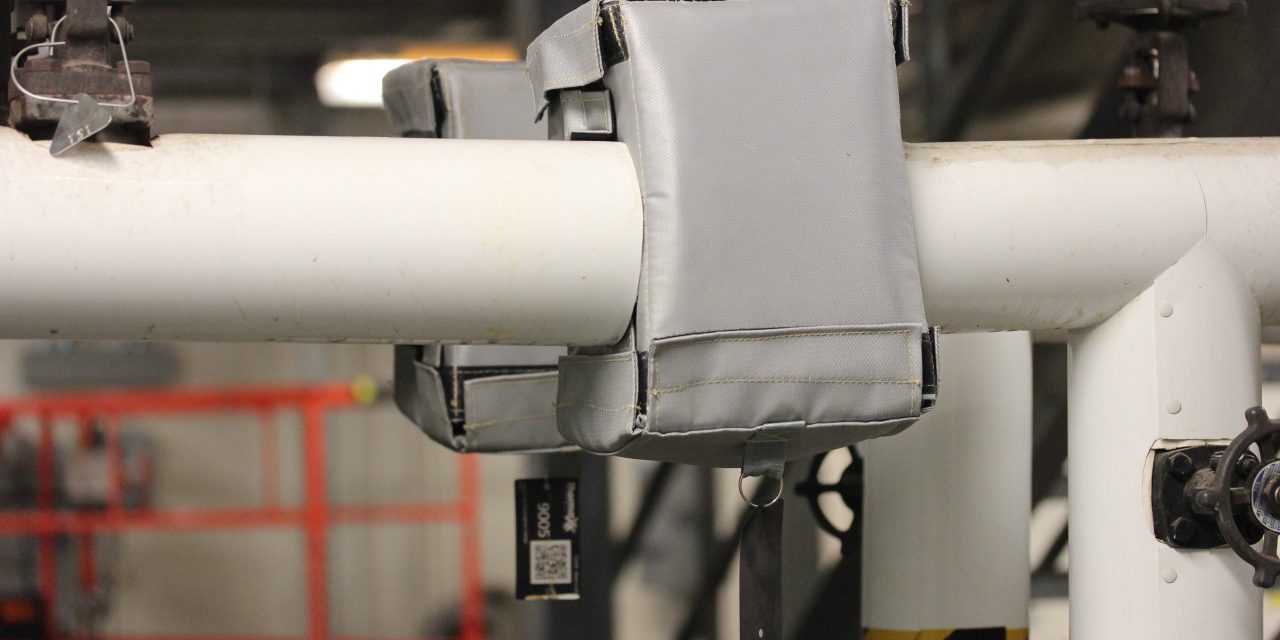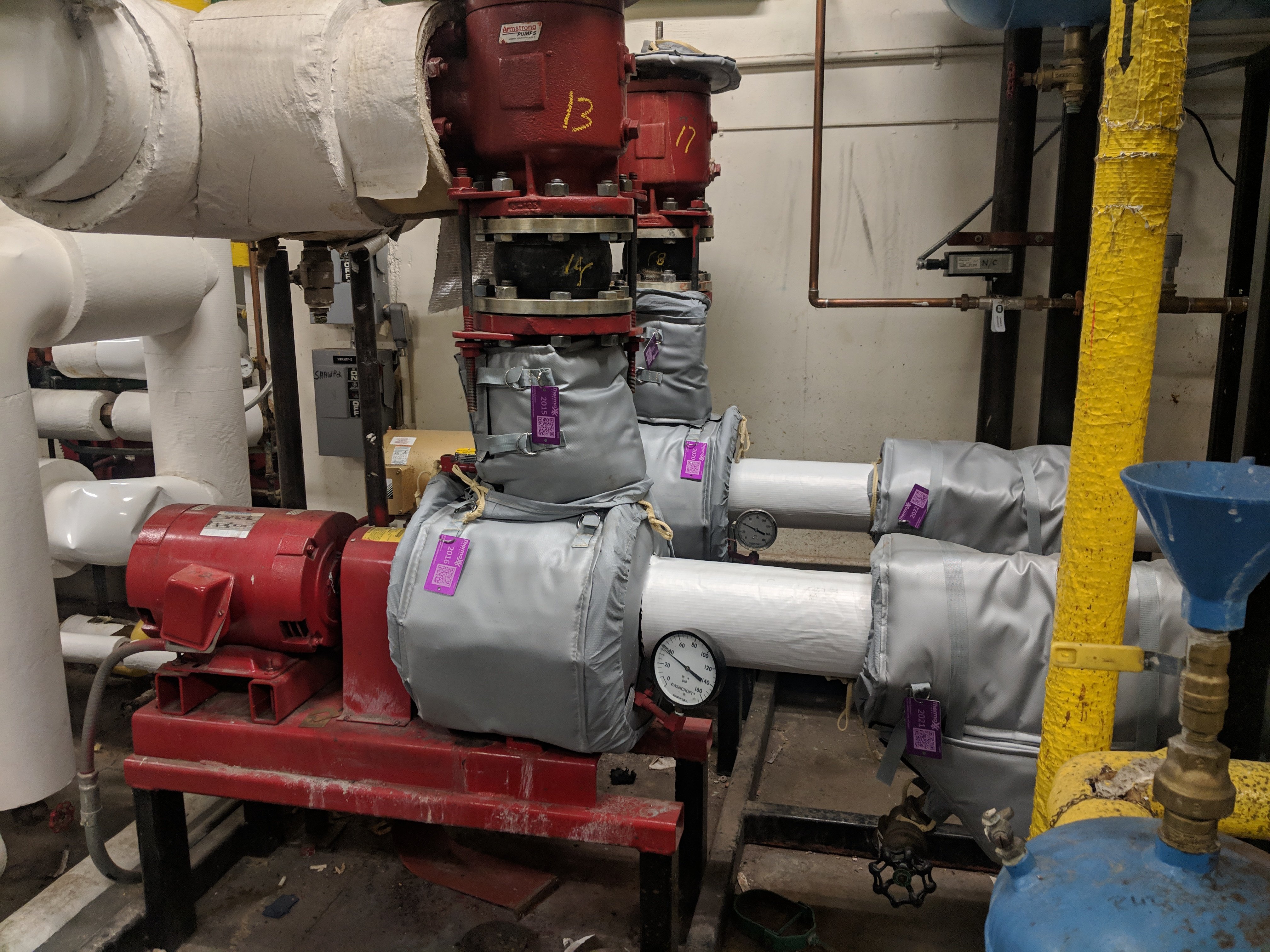The Difference Between Hot And Cold Insulation Materials
In This Article:
- Hot Water Pipe Insulation Materials
- Cold Insulation Materials
- What Is the Difference Between Heat and Cold Pipe Insulation?
- How to Choose Your Exterior Pipe Insulation Jacketing
- Contact Thermaxx to Learn More About Hot and Cold Insulation
It’s difficult to make the decision between purchasing hot or cold removable insulation materials without truly knowing both sides of the story. Both forms of insulation materials are going to save you money in the end, but it is vital to determine which is the most practical and cost effective for your piping system.
There are questions that need to be asked when choosing insulation. At the top of this decision tree is the most important: is the equipment or piping that we are insulating hot or cold? Once this question is answered the next question is: interior or exterior? The answer to these two questions will jump start the decision process when choosing an insulation
Hot Water Pipe Insulation Materials
Removable insulation is specifically designed to insulate piping systems transporting gas and substances at high temperatures. The materials used to construct the insulation work to prevent your pipes from overheating, while keeping the warmth inside the pipe. This helps to cut down on energy bills for your facility, saving you money in the long run.
Heat Insulating Materials
So, what materials are used during circumstances that require hot insulation? Well, that depends on the intended purpose of the pipe being insulated. There is a laundry list of materials to choose from all with different purposes, such as ceramic fibers, fiberglass, closed cell insulation, vinyl and pyrogel-xt. Below are 3 common hot insulation materials:
- Cray Flex: This material has a high thermal, heat and chemical resistance, while still produced from high quality raw materials.
- Resin Bonded Rockwool: Used in both cold and hot insulation, resin bonded rockwool has high thermal, chemical and heat resistance with an unmatched dimensional stability.
- Spiral-wrap Fiberglass: This type of fiberglass is difficult to install, but extremely inexpensive for your hot insulation needs. It both keeps the contents being transported at the proper temperature, while ensuring the excess heat remains within the piping system.
The most important part about picking a hot insulation material is understanding the maximum temperature the insulation will be covering. Components less than 350°F can be covered with off the shelf pre-molded fiberglass. When components are near or above temperatures of 1000°F, silica or ceramic insulation is usually required. It is very important to adhere to manufactures suggestions when picking and installing insulation for hot components.
Components That Require Hot Insulation
Numerous components and assemblies might need hot insulation. Some of these can include:
- Valves
- Ovens
- Chillers
- High-pressure steam piping
- Industrial processing equipment
- Heat treating
- Flanges
- Furnaces
- Exhaust manifolds
- Kilns
- Welding equipment
- Boilers
- Incinerators
- Heat exchangers
- Co-generation plants
- Dryers
- Compressors
- Turbines
- Expansion joints
- Catalytic converters
Keep warmth inside these components and more with hot insulation materials.
Benefits of Thermal Insulation Blankets
Hot insulation blankets provide numerous advantages to businesses and applications across many industries. Several of these benefits include:
- Improving therm savings: Insulation helps prevent heat from escaping your components, which maximizes therm savings.
- Lowering injury risk: Insulation materials help keep employees safe by controlling equipment's surface temperature.
Thermal blankets are also useful for many industries, including:
- Large offices
- Hotels
- Commercial facilities
- Government buildings
- Manufacturers
- Industrial complexes
- Chemical process plants
Regardless of your industry, if you have an application that will benefit from thermal insulation blankets, trust Thermaxx to provide you with a customizable option. You can easily remove and replace these products for periodic inspections and maintenance.

Cold Insulation Materials
Just like hot insulation materials, some of the materials used to produce cold insulation vary dependent upon the system of pipes they are insulating. Therefore, the materials used in either hot or cold insulation are dependent on the customization of the particular piping system. Two common materials used in cold insulation are:
- Polyurethane Foam: Perfect for handling low thermal conductivity and substances with below freezing temperatures. Polyurethane foam also allows for low smoke emission and low water vapor permeability.
- Rubber Foam: Rubber foam is also often recommended for condensation control as the closed cell technology is highly resistant to moisture vapor.
Components That Require Cold Insulation
Many types of parts may require cold insulation jackets to help save energy and reduce damage associated with condensation. Examples of components that benefit from cold insulation include:
- Outdoor heat pumps
- Cold water tanks
- Outdoor steam traps
- Water lines or mains
- Outdoor boilers
- Water meters
- Outdoor water valves
If you have any of these or other components that need cold insulation, Thermaxx offers customizable insulation jackets to fit each item.
Advantages of Cold Insulation
Insulating your cold components has numerous benefits. Some of the advantages associated with cooling jackets include:
- Saving money: Insulation jackets make keeping cold pipes at the right temperature easier, which helps you use less energy and minimize waste.
- Reducing pipe sweat: Insulation helps prevent condensation on your pipes. Controlling this moisture will assist in controlling wet spots on the floor, damage to water-sensitive equipment and corrosion under insulation.
If you need to insulate your cold pipes or components, using insulation solutions from Thermaxx makes it simple and easy for you to take advantage of these benefits and more.
Best Insulation for Cold Weather
With chilled insulation, keeping the cold in is as important as keeping the heat out. There are many types of insulation used on chilled water pipes. The two most popular are foam glass and rubber insulation or Armaflex. Although a little more difficult to work with than pre molded fiberglass, when installed correctly, these materials do a great job of stopping condensation and preventing energy loss.
What Is the Difference Between Heat and Cold Pipe Insulation?
The difference between hot and cold insulation materials comes down to a few things. Firstly, the materials used in hot insulation covers don't require a water vapor barrier that a cold insulation system needs to properly function. The water vapor barrier helps prevent metal degradation that can occur overtime.
Buildups of condensation occur within cold systems, which require bendable or flexible insulation to deal with this issue. Therefore, the types of metal, fiberglass, foam and other materials used for thermal bridging in cold insulation are much more flexible and moldable than those found in hot insulation materials.
Lastly, closed cell structure is needed in cold insulation to help avoid wicking. The material in high temperature insulations allows water to enter because the heat will cause the moisture to evaporate. However, in a cold insulation system, the water will not evaporate. Closed cell structure of the cold insulation material helps prevent this problem.
What Type of Insulation Is Most Effective?
Both types of insulation have many benefits, meaning the one that will be most effective for you will depend on your application. For instance, hot insulation will be more effective if you need to keep heat inside pipes.
Those who need to save energy and protect against condensation will find cold insulation more effective. When you work with Thermaxx for customized insulation jackets, you can expect exceptional quality from either style because we design insulation materials to your specifications. No matter what you need, our team is ready to help.
Required Thickness of Insulation Material
The thickness necessary for hot insulation pipes is dependent on multiple factors. To ensure you have the right insulation thickness for your components, you'll need these measurements:
- The piece's operating temperature
- Ambient temperature in the location
- Surface or touch temperature for the component
Our professionals will use these measurements to determine how thick the insulation needs to be to fit your requirements. Once they have determined the necessary thickness, our experts can design and manufacture a hot insulation jacket for your specific application.

Wrapping Up: How to Choose Your Exterior Pipe Insulation Jacketing
Once the insulation has been chosen, an exterior jacketing must be picked. When the insulation is installed properly and to manufacturers suggestions, the covering is usually chosen for the environment it will be exposed to rather than the hot or cold type it is insulating. For interior components, that will not be walked on or subjected to frequent damage, PVC or silicone is normally used. For pipes that may be subjected to frequent damage, metal or thicker PVC can be used.
Contact Thermaxx to Learn More About Hot and Cold Insulation
Learn more about how Thermaxx can help solve your unique insulation needs though our hot and cold component insulation options - Contact us today!
Related Posts & Helpful Resources:

Thermaxx Jackets
Thermaxx Jackets was founded over 25 years ago with a single purpose: to help our clients save energy with removable insulation blankets when traditional stay-in-place insulation is not practical. Our dedication to this purpose has resulted in a long list of customers who have saved money thanks to Thermaxx Jackets! Combining expertise in heat loss, wireless monitoring, insulation design, and several other disciplines, we’ve become the #1 provider and fabricator of removable insulation jackets and covers. The Thermaxx Sales and Service teams are experienced and trained to provide clients with the most timely and cost-effective solution.
Categories
- removable insulation
- thermaxx jackets
- energy savings
- savings
- energy efficiency
- safety
- pipe insulation
- energy
- case study
- insulation materials
- thermal insulation
- heat loss survey
- heat loss
- energy loss
- hot insulation
- fiberglass
- installation
- steam
- New York
- custom insulation
- NYC Case Study
- boiler
- university
- Connecticut
- reusable insulation








